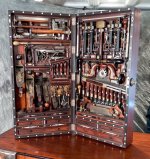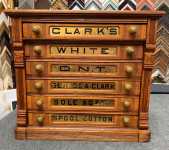Toni Ciuraneta
Member
- Messages
- 5,629
- Location
- Catalunya
I run acroos this video and I thought it would be interesting to share it here.

Neat video, but that big round disk the lady was using scares the heck out of me

 thecarpentryway.blog
thecarpentryway.blog
sure it does, that China and OSHA stands for Okay Stuff Happens Anyhowdidn't pass OSHA standards.
One of them was too wet when I turned it and when the diameter shrunk from drying the inner lid is now locked in forever and ever amen.
 ). The traditional way there is to inset the bottom into a slight groove in the outside of the box and as it shrinks in it locks the bottom into place. I managed to get one to real close to water tight that way with some effort (it would drip slightly when dry and then tighten up in a minute or two and stop).
). The traditional way there is to inset the bottom into a slight groove in the outside of the box and as it shrinks in it locks the bottom into place. I managed to get one to real close to water tight that way with some effort (it would drip slightly when dry and then tighten up in a minute or two and stop).It's in Japan.sure it does, that China and OSHA stands for Okay Stuff Happens Anyhow
I always think that when I see people like Roy Underhill or any other traditional woodworker use their skills with the old timey tools that it is just amazing what they were able to create. Stop to think about the furniture people were building before the advent of power tools. Some of the most marvelous furniture ever built was built without a single power tool.Thanks for sharing, Toni. It's cool to watch people using the old (or somewhat primitive) methods to create beautiful work. In this case, it's a combination of old and new(ish) techniques.


Off on a side track: -……..OSHA stands for Okay Stuff Happens Anyhow
